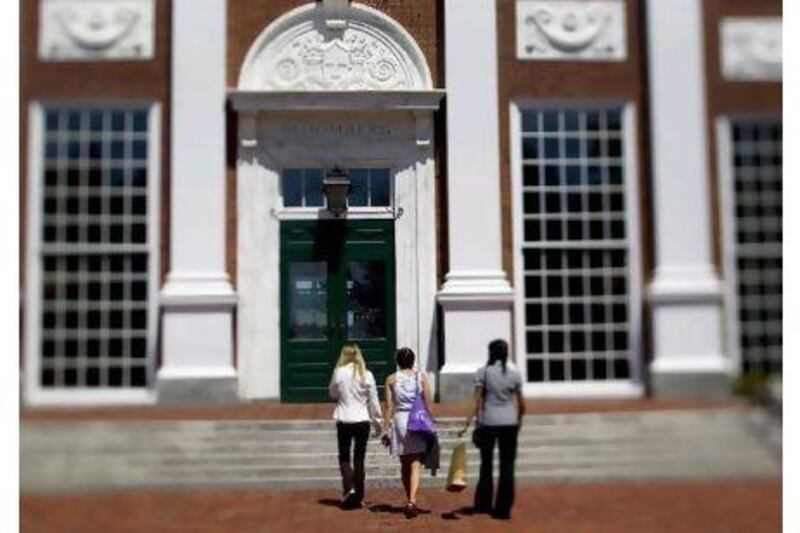Price, mix and size: these are three prime considerations when choosing a business school. In advance of its annual ranking of business schools, due on November 15, Bloomberg BusinessWeek has been releasing subsets of its research, and while the work is focused on the United States, it does shed light on how top business schools perform in key categories.
In terms of mix, which business schools have the most international student bodies?
The study's results for American schools ranged from 68 per cent foreign at Syracuse University's Whitman School of Management down to 5 per cent foreign at the University of Knoxville's College of Business Administration. Non-American schools showed higher numbers, with a peak of 98 per cent at both IMD in Lausanne, Switzerland, and the Hong Kong University of Science & Technology. The low score for a non-US school was 31 per cent at the Ivey School of Business in Canada.
That's odd about the Canadian school. I thought Canada was a happy diorama of all the peoples of the world.
It is, and the Ivey school is certainly internationally minded. It boasts of being the first North American business school to open a campus in Hong Kong, and it also has a campus in Mumbai.
Regardless of where we're from, how many of us will there be in the classroom?
About 14 students for required courses in the least crowded B-school classroom in America, at Baylor University's Hankamer School of Business. At the other extreme, there will be 92 of you at Harvard Business School, 90 at IMD and 80 at the University of London's London Business School.
I hadn't guessed Harvard would be so jammed. The more the merrier?
Bloomberg's Louis Lavelle notes that there is a reverse relationship between class size and student satisfaction. He writes: "Class size is important, but don't ignore other factors that may play a far greater role in determining whether a school will help you achieve your career goals - like curriculum, faculty and recruiting prowess. There is, after all, a reason the top schools have crowded classrooms: everyone wants a seat."
And I suppose I'll be paying a premium for the privilege of being crammed into a classroom?
That you will. Whereas the cheapest schools charge less than US$50,000 (Dh183,645) for a year's tuition and fees, Harvard's school was the priciest in the Bloomberg study and clocked in at $126,576 a year. In other words, students in the typical classroom at Harvard Business School forked out a total of $11,644,992 in tuition and fees. Which suggests business school is a pretty good business to be in.
Is there a ranking of business schools that is less US-focused?
The Financial Times takes a more global approach to ranking the business schools. It places the US-based Hult International Business School, which has a campus in Dubai, at number 65 among MBA programmes worldwide.
* The National staff
What to expect from your business school
The Life: How top business schools shape up according to price, student diversity and the size of classes.

More from the national




